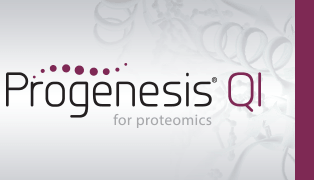How are peptide values calculated from peptide ions?
Peptides in Progenesis QI for proteomics are the result of peptide ion deconvolution. Peptide data can be viewed at Review Proteins, via the view peptide measurements button, or in one of the peptide-level exports. A peptide's data is generated from its collection of peptide ions...
Unique identifier
The identifier applied to a peptide is the combination of retention time and neutral mass. Both of which are values derived from the constituent peptide ions (see below). Note that the sequence of a peptide is not used as this is not necessarily unique across the whole experiment.
Physical characteristics of the peptide
Neutral mass and retention time are based on the average of the values belonging to the constituent peptide ions.
Identification data
The identification for a peptide is based on the best identification within the collection of peptide ions. Note that according to how deconvolution works with identifications, each of the ions for a peptide will have the same set of possible identifications. Score, sequence, modifications, protein - all reflect the best identification.
Quantitation-based values
Quantitation values are those based on how much of a 'thing' is present in your sample(s). In Progenesis QI for proteomics peptide ions are the base unit of measured abundance. For peptides, quantitation-based values are based on the sum of the peptide's constituent peptide ions. For example, with Max Fold Change the value for each condition is based on the sum of each ion within that condition.
For a peptide to be considered as contributing to the abundance of a protein, all of it's ions must be marked as contributing to protein quantitation.





